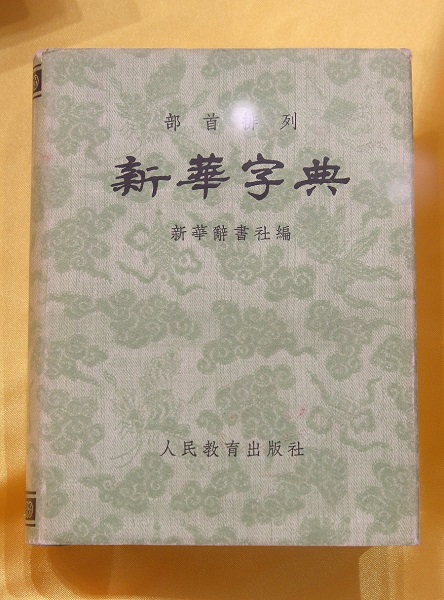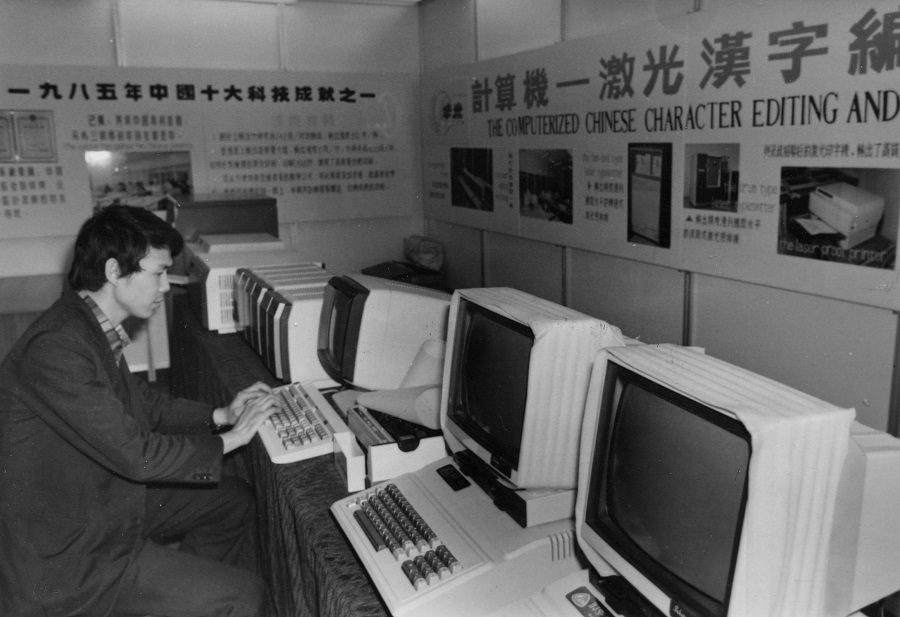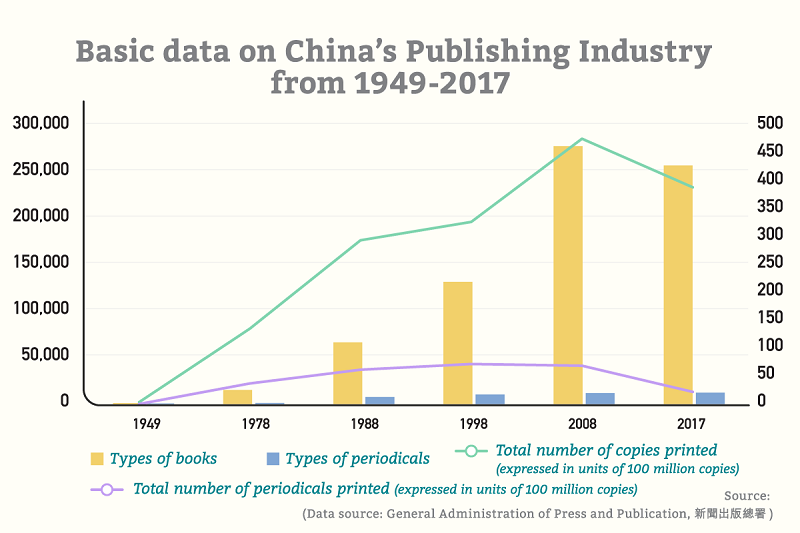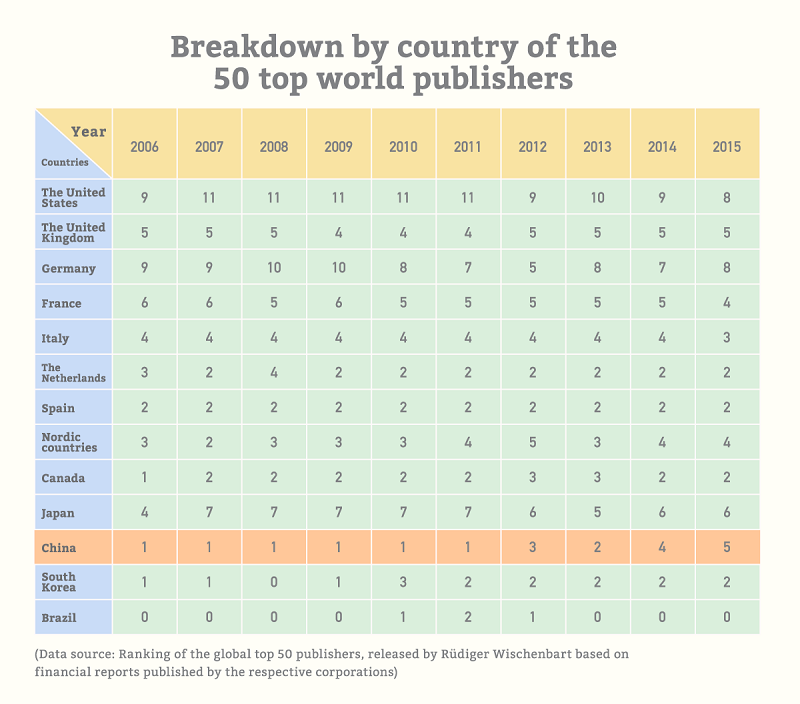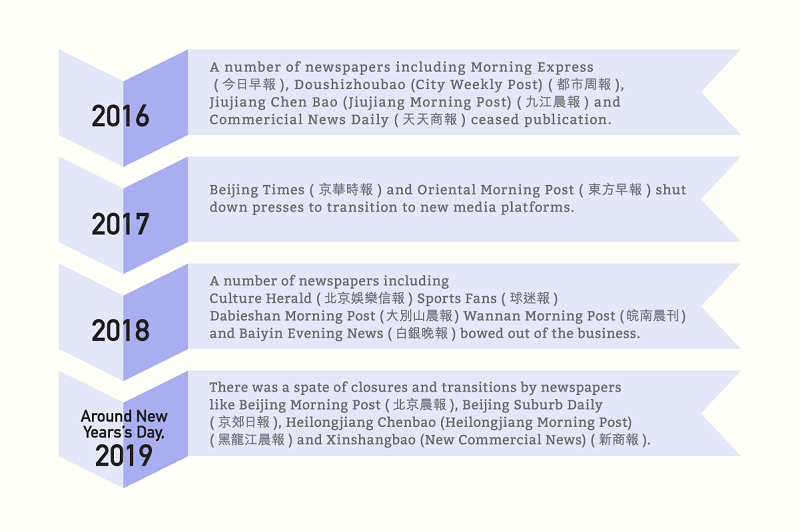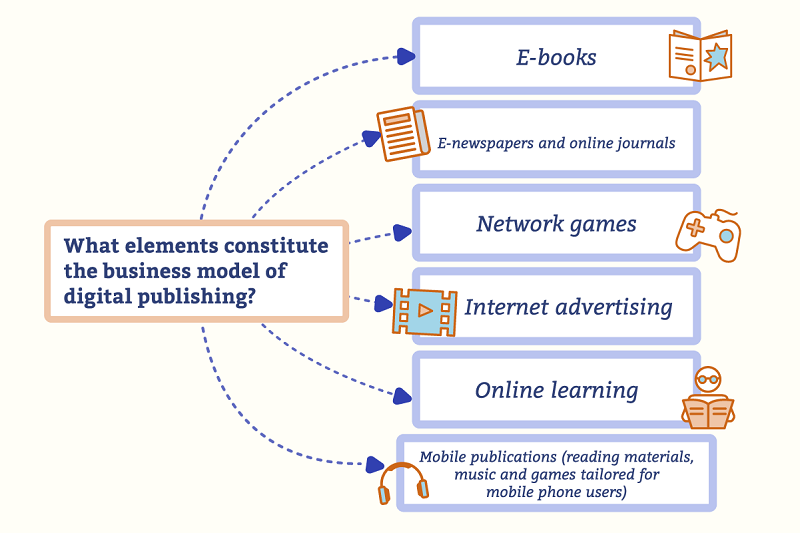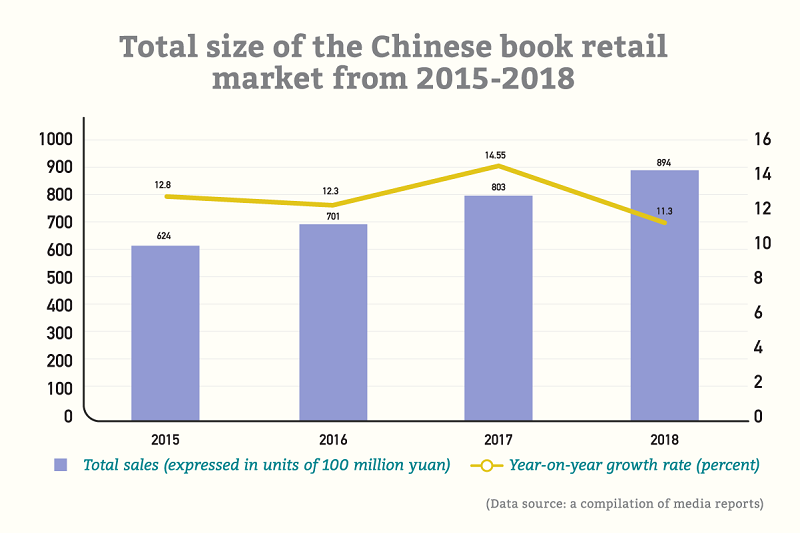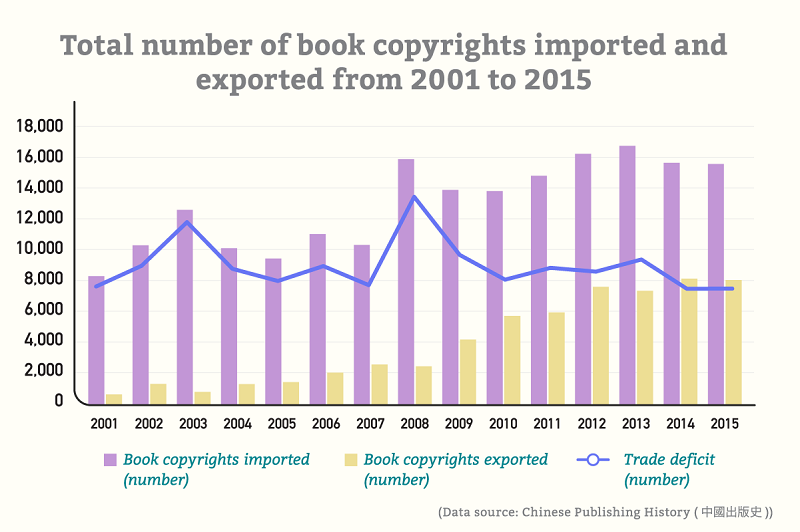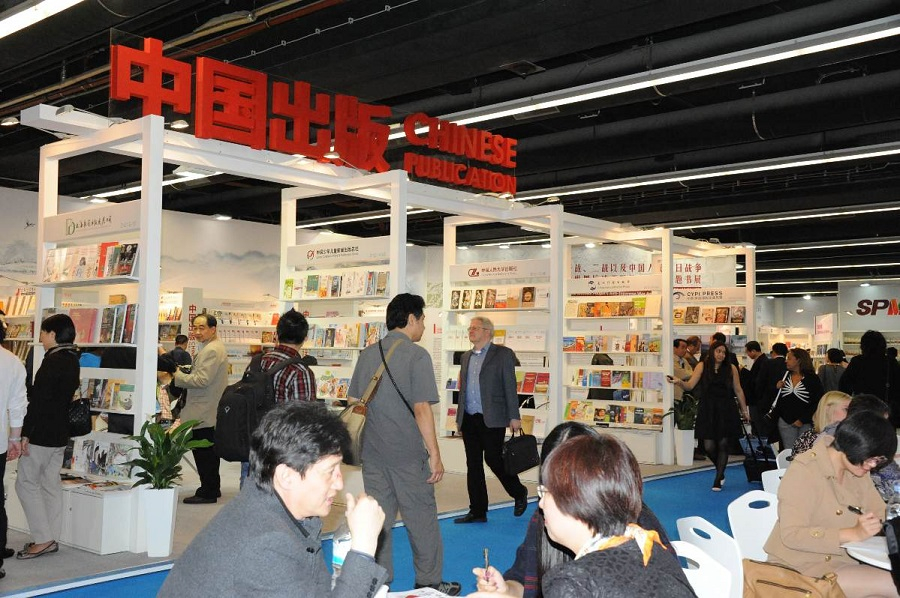In recent years, “winter” is a term that pops up in just about every conversation concerning the publishing industry. In 2015, the successive closures of Hong Kong Daily News (新報) and The Sun (太陽報) both Hong Kong local newspapers, led the BBC Chinese Service to speculate on a coming “winter” for paper-based publishing. At the same time, signs of decline - layoffs and closures - in Chinese mainland’s publishing industry have also raised questions about its prospects and outlook. Could these be warning signs of a coming winter for Chinese mainland’s publishing industry?
In recent years, “winter” is a term that pops up in just about every conversation concerning the publishing industry.
In Hong Kong, many may recall the successive closures of Hong Kong Daily News and The Sun, both local newspapers, in 2015. These have led the BBC Chinese Service to speculate on a coming “winter” for paper-based publishing.
The two newspapers’ closures were hardly isolated failures. According to data published by the United States Department of Labor in 2016, employment in the U.S. newspaper industry has dropped by 60%. The Japan Broadcasting Corporation (NHK) has likewise reported on the 14 consecutive years of negative economic growth in Japan’s publishing industry, and has drawn attention to the fact that the sector’s turnover in 2018 has fallen by more than half since its peak in 1996; and on February 2019, Koch, Neff & Volckmar GmbH, Germany’s largest book wholesaler, filed for bankruptcy for its seven subsidiary companies.
Recent signs of decline - layoffs and closures - in Chinese mainlands publishing industry have raised questions about its prospects and outlook. Could these be warning signs of a winter for Mainland China’s publishing industry which, in its heyday, saw some books so highly sought-after that a reader who managed to get his hands on one would consider himself exceedingly lucky? And how has the industry evolved between then and now?
From scarcity to surfeit
In modern Chinese language, the word “publish” (chuban) originally a Japanese term, was introduced into the Chinese vocabulary in the latter half of the 19th century. While the term has been in use for about 100 years, publishing activities, including releted industries and professions, had been evolving in China for several millennia. For China, publishing is an industry that is ancient yet still a fledgling.
In the early days of the People’s Republic of China, books were both rare and expensive. For publishers, the major challenge was increasing the output of publications as quickly as possible. To this end, the nation institutionalized a professional division of labor between the publishing, distributing and printing sectors. It also established standards for books and periodicals in terms of how they should be edited and reviewed, how prices should be set and how royalties for authors should be calculated.
The 1950s was a time when many of today’s commonly-used reference books such as the Xinhua Dictionary (新華字典) and the Contemporary Chinese Dictionary (現代漢語詞典) were being compiled, or, like the Cihai (ocean of words, 辭海) and Ciyuan (source of words, 辭源) were being revised for release as new editions. Many outstanding works by Chinese and foreign authors, such as The Complete Works of Lu Xun (魯迅全集) and How the Steel Was Tempered (or The Making of a Hero, 鋼鐵是怎樣煉成的) were also released during this time.
After the commencement of the Cultural Revolution (文化大革命) the variety of publications plummeted, with only 3,000 to 4,000 titles released per year. The nation became plagued by a dearth of books. Between 1966 and 1970, works of Party Chairman Mao Zedong (毛澤東), books of his quotations and his portraits accounted for 80.7 percent of all books published. In 1965, 790 magazine titles were sold in China; by 1966, this had plunged to just 191 titles; by 1967, the figure had further dwindled to 27, and by 1969 only 20 magazine titles remained throughout the nation.
When the Cultural Revolution finally ended, various publishing houses took on the task of reprinting and republishing their previous bestsellers in order to satiate a nation famished for books. The State Bureau for Publication (國家出版局) helped round up publishing houses in around a dozen provinces and cities, and together they labored to re-issue 35 types of long-censored acclaimed works, and reprinted a total of 15 million copies. The demand for paper was so high that even paper reserved for printing the Collected Works of Mao Zedong (毛澤東全集) had to be used. The reprinted works were released in Beijing, Shanghai, Guangzhou and other large and mid-sized cities during the Labor Day holiday in 1978.
The China Newsweek magazine (中國新聞周刊) gave a vivid description of the subsequent book-buying spree: “Today, a huge crowd has gathered in front of the Xinhua Bookstore (新華書店) in Wangfujing (王府井) - though there are still a few hours to go before the bookstore opens its doors - in the hopes of getting their hands on previously banned foreign literary classics, now formally reprinted and distributed. Having caught wind of the news through various channels, these readers started queuing in front of the bookstore early this morning. People of various ages - from teenagers to elderly people in their 60s and 70s, and of different occupations and genders – have flocked to the bookstore, united by a common cause.”
While the publishing industry grew at breakneck speed, the printing industry struggled to keep pace with the demand. In the 1980s, around 40 percent of university course materials could not be delivered before the start of the semester, and Beijing’s printing capacity could only satisfy 70 percent of its demand. Due to the immense backlog, many scientific books and journals also failed to meet their scheduled publication dates. In July 1979 the dilemma was finally solved by the invention, by Wang Xuan (王選), of a key technology known as the “laser photo composition system for Chinese character typesetting.” Wang was an associate professor at the Mathematics and Mechanics Department of Peking University (北京大學數學力學系). This groundbreaking technology computerized the processes of inputting text and typesetting, cutting the time needed for publishing an average book from one year (back when the old type setting method was used) to around three days. This has enabled publications to skyrocket in variety and volume and provided a faster and more efficient way to promote cultural change.
The publishing industry boom was reflected not only in the growing number and scale of its operations, but also in the rising quality and variety of its publications. Books and periodicals on every topic - politics, economics, culture, education and more - were released, filling up the once-blank publishing space.
Furthermore, the industry also transitioned from being part of the planned economy to a market-driven business, with some enterprises rising as publishing giants releasing books, newspapers, periodicals, recordings, electronics as well as e-publications.
Has winter come for the publishing industry?
The 1978 book-buying mania and its record queues are now long past. Today, the widespread use of the internet and the emergence of online bookstores have changed how people purchase books. According to research data collected by the All-China Federation of Industry and Commerce (全國工商聯) and the China Book Publishing Association (書業商會) around half of the physical bookstores in China closed in the 10 years between 2004 and 2014. And bookstores are not the only casualties - since 2013, the newspaper industry in China’s mainland has also experienced negative business growth.
The demise of these paper-and-ink newspapers triggered a brief wave of panic in the traditional publishing industry, leading some pessimists to lament the inevitable extinction of traditional publishing as internet-based new media take center stage.
In reality, the issue may not be so straightforward. Zhang Zhengfa (張政法) a professor of the Communication University of China (中國傳媒大學) who studies the mass media, saw the new wave of paper-based newspaper closures both as an inevitable outcome as well as the news industry’s bid for survival. Cheng Yao (程瑤) a commentator on media issues, also pointed out in an analysis that while the new media does pose a significant challenge, the increasingly homogeneous content and imbalance amongst paper-based newspapers have also contributed to their demise.
The phasing out of newspapers does not necessarily spell the end of the traditional publishing industry. On the contrary, the ubiquity of the internet, cellphones and e-readers have fueled a revolution known as digital publishing.
Oriental Morning Post (東方早報), for example, founded The Paper (also known as Pengpai) a website on political news that comes with its own news app. Following its announcement of a hiatus in 2016, the Oriental Morning Post made a complete transition to a digital format by merging with The Paper. By the end of 2017 more than 100 million people had downloaded The Paper’s app, and the app attracted more than 8.6 million daily active users. So, in this case, rather than spelling the Oriental Morning Post’s demise, digital publishing facilitated its rebirth and gave it a new lease of life.
In recent years, while the traditional publishing industry has been struggling with the rising cost of paper, printing and copyright acquisition, pay-for-knowledge services have been booming with the emergence of numerous paid digital content platforms such as iGet (得到) and Ximalaya FM (喜馬拉雅FM). The gaming and video industries have become increasingly mature as business models and the ease with which users can obtain knowledge and entertainment mean that the publishing industry has to compete harder for their users’ limited time and attention.
For the publishing industry, the combination of challenges could be a recipe for disaster - yet it may also present an opportunity for success. Leveraging their own resources and exploiting the unique features of new media platforms, traditional publishers must explore new ways to publish content and expand their business portfolios. In July 2018, Sanlian Lifeweek Magazine (三聯生活周刊) a subsidiary of the China Publishing Group Company (中國出版集團) released a 10-part historical educational podcast titled Why We Love the Song Dynasty (我們為甚麼愛宋朝) which exploded in popularity. Soon they had six publishing companies knocking on their doors with offers to publish the lectures in book form. A video streaming website acquired the rights to film and produce a pay-per-view video programme with the same title and, to top it off, a real estate corporation in Hangzhou expressed interest in collaborating with Sanlian Lifeweek to launch a Song dynasty-themed real estate project. Li Honggu (李鴻谷) chief editor of Sanlian Lifeweek, estimated the history podcast created an approximate total value of around 8 million yuan.
Yao Wentan (姚文壇) the vice-president of the social networking platform Douban (豆瓣), said publishers have a knack for identifying quality content that other content providers are hard put to emulate. Douban itself has capitalized on this by selling tens of thousands of highly popular courses - all created in collaboration with publishing groups - during its airtime.
While the overall state of the global publishing industry has been lackluster in recent times - especially in the United States and European countries, where book sales have registered a growth rate of around 1 percent or, worse, suffered negative growth, China’s book retail market has remained relatively robust and maintained a double-digit growth rate.
Going global
China’s publishing industry may be thriving within the nation, but how are they faring in the global market?
In 2010, Julia Lovell, renowned British sinologist and translator, commented on the embarrassing performance of China’s homegrown literary works in the overseas market: in 2009, only eight Chinese novels translated into English were published in the entire United States. In Cambridge, home of one of the United Kingdom’s most prestigious universities, books by Chinese authors barely filled a meter-long shelf space in the best-stocked bookstore.
In recent years, however, the situation has quietly changed. Instead of hanging around the fringe of the global publishing community, China has made headway in becoming a member of it, in part thanks to Shi Zongyuan (石宗源). In 2003, when he was director of China’s General Administration of Press and Publications, Shi declared that one of China’s five key strategies for developing its news and publishing industry must be to venture into the global arena.
As an increasing number of literary masterpieces by foreign authors enter the Chinese market, China’s growing literary presence on the global stage is gradually helping the nation increase its literary exports and reduce its copyright trade deficit.
While China has exported some mega-bestsellers like Wolf Totem, on the whole there’s no getting around the fact that China’s copyright exports are somewhat limited in genre, with the majority covering traditional Chinese culture like Qigong (氣功) health, Chinese medicine and culinary arts. In terms of economic influence, China’s homegrown exports still have a long way to go before they can bring in lucrative profits from royalty rates on a level similar to the foreign bestsellers imported by China.
Realizing that publications serve as important channels through which foreigners can understand China, publishing houses within China have not stopped at merely exporting the copyright and copies of homegrown works. They have also acquired foreign companies through international mergers; or established overseas branches by means of capital management: in July 2014, Phoenix Publishing & Media (鳳凰出版傳媒集團) acquired the U.S.-based children's publishing unit Publications International Ltd. (PIL) for US$85 million, and thus gained ownership of PIL’s image license deals with Disney and a number of other companies, as well as its international sales network. The purchase is the largest international merger ever undertaken by a Chinese publishing company.
Publishing companies like the Foreign Language Teaching and Research Press (外研社) China Translation & Publishing House (中譯出版社) and the Encyclopedia of China Publishing House (中國大百科全書出版社) also scrambled to set up their own overseas editorial offices. Working with their overseas subsidiaries, they have been able to gain insight into their local readers’ habits and tastes enabling them to publish Chinese-themed books tailored to mainstream audiences.
China has been honored as a VIP guest country in five recent large-scale international book fairs. These included the Frankfurt Book Fair, the London Book Fair and the U.S. EBA Book Fair. This has enabled Chinese publishers to play a more active role as China’s representatives, and has helped propel China’s publishing industry further onto the global stage.
The publication industry helps China connect with the world and present to the world a more complete picture of China. It helps improve China’s international image. During a Sino-German cultural exchange seminar held at the Frankfurt Book Fair on October 10, 2018, Nora Fischer, representing the German publisher Drachenhaus-Verlag, was honest in saying that the German people’s view of China was, very possibly, incomplete and/or biased.
China’s immense material advances in the past 70 years, achieved through its stunning economic growth, has been nothing short of a miracle in international eyes. The growth of the country’s publication industry and the creation of the cultural wealth this has helped bring about is as spectacular. Not only has this enriched people’s lives, it has also enabled the world to better understand China and its culture.
References:
Chinese Publishing History edited by Xiao Dongfa (肖東發) Yang Hu (楊虎) Peking University Press, 2017
Shifting Trends in the Global Publication Industry from 2006-2015 (2006——2015年十年間全球出版業格局變遷) by Ren Dianshun (任殿順) Zhong Hongyan (張鴻雁) Editorial Friend (編輯之友) July 2017
Brick-and-Mortar Bookstores Registered Negative Growth in 2018? Fiction Prices Declined While Paper Prices Remained Stable? What Big Data Reveals (2018年,實體書店銷售負增長?小說定價下跌?紙價沒漲?「開卷」大數據) by Zaoshu (做書) Jan. 14, 2019
Traditional Publishing Industry Embraces Paid Knowledge-Sharing, Targets Specific Market Segments to Meet Niche Market Demand (傳統出版業「擁抱」知識付費:瞄準細分領域,滿足小眾需求) by Zhang He (張賀) People’s Daily (人民日報) Jan. 24, 2019
Mixed Fortunes - An Analysis of the Global Publishing Industry’s Development Trend (喜憂參半——世界出版業發展走向分析) chinaxwcb.com, March 20, 2018




